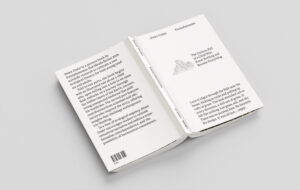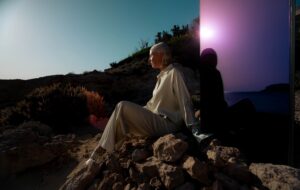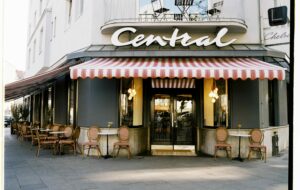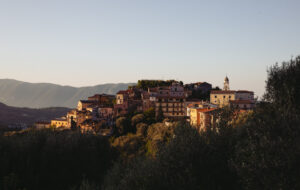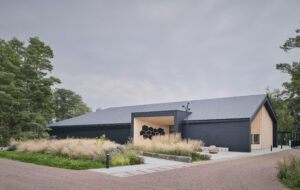|
|
||
|
The photography of any other itinerant film director might easily be considered an extracurricular project, as ephemera for the fans, but the travelogues of Wim Wenders, which he has been exhibiting and publishing since the mid-1980s, are different. Photographing landscapes seems a natural activity for a director whose films have always been poetic, often melancholic, evocations of place. In his features, plot and characterisation are swallowed by the urban nowheres, the dying industrial borderlands, the city sprawls through which his aimless protagonists (often photographers themselves) drift. Even as Wenders has increasingly turned to documentary filmmaking, location remains vital. In Pina, his recent tribute to the dancer Pina Bausch, the motorway verges, monorail and factories of the German city of Wuppertal all loom large. Indeed, so fascinated is Wenders by architecture that he directed a 12-minute 3D tour of SANAA’s Rolex Learning Centre in Lausanne, entitled If Buildings Could Talk, for the Venice Biennale last year. In Places, Strange and Quiet, an exhibition and accompanying book presented by London gallery Haunch of Venison, Wenders whisks us from a 1977 Indonesian circus via building sites in Berlin and Japanese battleships to Armenian hinterlands. Some are locations familiar from his films (his photographs are often the starting points for his scripts), others just places that have captured his attention. With the exception of the few early black-and-white works from the late 1970s, all the images are very large, very colourful and, apart from the occasional human inhabitant, very empty. Wenders favours two viewpoints: the casual street view (as glimpsed from the car window in his early road movies) and the majestic aerial panorama (think of the angel’s-eye crane shots in Wings of Desire). The latter are, however, the least interesting. For Wenders is at his best with two feet on the ground, his camera trained on those architectural oddities, those neglected nooks and crannies where both adjectives in the title of the exhibition (which ended in May) come into play. Cemeteries are frequent subjects. Wenders enjoys, one suspects, their unexpected intrusion into landscapes, such as a cluster of high-rise apartments or a drive-in cinema, that wouldn’t normally want them. No man’s land is another favourite, especially concrete tracts of land hemmed in by suburban dwellings. In many of his scenes, mystery plays a key role: why do giant letters from the Armenian alphabet decorate a barren rural vista and what do they mean? Wenders’ eye for the ordinary and overlooked chimes with the gaze of the new topographic photographers. His focus on walls is particularly reminiscent of the dead-end spaces photographed by Frank Gohlke while his combination of lonely streets and a brilliant palette recalls the work of Stephen Shore. It was Wenders though who was one of the first to accord such attention to the everyday American landscape in his film Alice in the Cities – made two years before the New Topographics show inaugurated the banal into photographic history in 1975. Yet there’s only one image of America included from the last decade in this collection: an incredibly nostalgic, Edward Hopper-esque Montana streetscape which time has clearly left well alone since the 1950s. Unsurprisingly for someone brought up amid the ruins of post-war West Germany, Wenders always has the threat of erasure on his mind. Subtlety may not always be his priority; sometimes it’s almost as if his images, a Berlin wall pot-marked with bullets for example, have “everything is about to disappear”, the final phrase from his 1982 short Reverse Angle, writ large all over them. But impact is undeniably what he excels in. When Wenders uses the monumental size of his prints to subsume the viewer in forlorn and purposeless hulks of architecture such as a disused factory or an abandoned, decrepit Ferris wheel, it’s impossible to look away. For here, Wenders isn’t interested in buildings that talk, but those that were silenced long ago. Wim Wenders: Places, Strange and Quiet. Haunch of Venison. £23 |
Image Haunch of Venison
Words Isabel Stevens |
|
|
||





